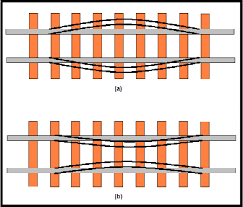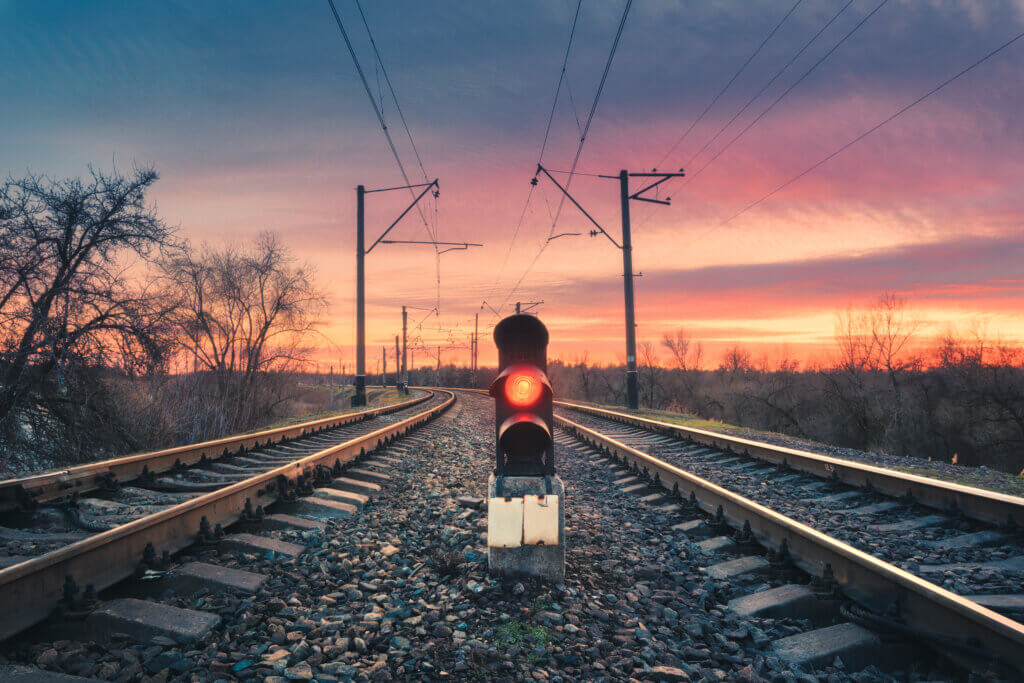
What are the Pathologies and Problems on the railroads?
If you make a quick query on the internet, you will find the definition of "pathology" as: "deviation from what is proper or appropriate, or from what is considered to be the normal state of an inanimate or immaterial thing". In the medical sector, pathology is defined as “any anatomical and / or physiological deviation, in relation to normality, which constitutes a disease or that characterizes it”. The railroad sector is also totally susceptible to suffering from pathologies and problems in the railroads.
This is mainly due to the high tension and the friction of the train wheels, which carry out intense and constant movements on the railroad tracks. railroad pathology refers essentially to the problems and wear and tear that the tracks of a railroad undergo over time due to incessant movements. You can understand a little more about the types of wear and how they occur by clicking here.
The main pathologies and problems in the railroads are caused by the lack of effective maintenance in the materials of the tracks, which over time wear out, suffering fractures and, sometimes, losing their functionality. In the last century, for a long time the use of railroads was gradually being replaced by the use of the road sector. This exchange implied the lack of investments, the abandonment of several railroad networks and, consequently, the complete wear and tear of the structures that make up the railroad line.
In recent years, however, railroad auctions have started to take place more frequently, many railroad lines have been concessioned and are already receiving investments in their infrastructure and expansion in their mileage. Good organization, maintenance and general care of the line are essential to guarantee the full functioning of the railroad network, allowing trains to run without problems in their structure.
These are small details that make up the range of pathologies and problems on the railroads, but that are enough that the process of moving trains is totally hampered. Next, we will point out some defects that can occur with the tracks and the compositions of a railroad line. We will also point out how they can be eliminated in order to guarantee the full functioning of rail traffic.
Content Index
Pathologies and problems in the railroads
Alignment

The trains, during their journeys, encounter straight and curved parts. For this reason, it is essential that the composition of the railroad line is aligned at its ends and at the point of intersection of the tracks. When the structure misalignment occurs, the trains suffer more difficulties to traverse their path, which implies a series of problems, such as the decrease in speed, loss of time on the route and decrease in the number of loads and circulating trains.
Gauge widening

By definition, the gauge is the measure of the distance between the two ends of a track that form a path. The rails are positioned one after the other, forming a straight line, and next to it is a further composition of rails, allowing the train wheels to pass through the rail structure to move.
There are appropriate measures for the size of the gauge, according to the size of the distance of the side wheels of a train. The occurrence of widening of the gauge is one of the pathologies and problems in the railroads that can occur due to a series of factors such as wear on the railroad ties, wear of the rail billet and among others.
As you can see in the figure below, the length of the gauge causes an anomaly in the extension of the railroad line, which can be totally harmful to the trajectory of the train, which was not built for this new extension of the gauge size.
Gauge narrowing

Just as lengthening the gauge space is harmful, the opposite is also harmful. Calculations are performed to suit the size of the train and any type of change in gauge size is harmful.
When there is a narrowing of the gauge, which is the decrease in the length of this area, the trains are also not able to travel on these new measures. For this reason, it is essential that companies carry out the necessary procedures and develop maintenance systems in these defective areas, avoiding any type of problems harmful to transport vehicles.
Twist
You, the reader, must understand that the construction and installation of the tracks is done due to the performance of countless calculations that aim to build a symmetrical and leveled railroad line. Small components that are out of place or that cause the track to be uneven are enough for the route to become dangerous for trains.
On many railroads, the rails go through a welding process, so that they form a unique and extensive material, facilitating the vehicle's locomotion and reducing some risks along the way. But, when an anomaly occurs in this structure and one of the parts becomes uneven, there is the so-called process of twisting the rail, in which a part of the material is higher in relation to a subsequent point. These pathologies and problems in the railroads can be the causes of trains falling and derailing, which are the moment when the wagons move from one another and get lost from the rest of the train composition.
Levels
Twists are a specific type of change in leveling that slopes upward. However, there are other pathologies and problems in the railroads that are affected by changes in the appropriate level of the position of a railroad track.
This unevenness can be, for example, longitudinal, where the structure hangs downwards, causing a “hole” effect. This is another important anomaly that must be dealt with properly so that it does not disturb the correct functioning of the train. This unevenness can also cause problems such as thrombi and the derailment of train cars.
Track problems

Finally, we need to mention the problems that actually occur in the structures of a rail part. The composition of a railroad track consists of three main parts: boletos (upper), web (connection point) and skids (lower).
The pathologies and problems in the railroads that occur effectively in the structures of the trains are usually visible mainly in the boletos, since they are the parts that have direct contact with the wheels of the trains. Cracks can occur in the most varied ways, which damage the structure and become apparent over the time that the movements of the trains are constant on the tracks. Problems can also occur, such as breaking and separating the skates with boletus, that is, the soul suffers from cracks and fractures, compromising the entire composition.
Conclusion
We realized throughout the article the variety of pathologies and problems on the railroads that can occur if the necessary care is not taken seriously. The supply and transport carried out by the railroad lines are extremely important for the economy and for the support of several municipalities. Therefore, it is essential that maintenance is carried out frequently and in an appropriate manner, in order to ensure that trains can traverse the length of railroads in a safe manner.
Complementary sources:
https://journals.openedition.org/spp/1568
https://www.cnt.org.br/agencia-cnt/conheca-principais-defeitos-pavimento
https://www.confea.org.br/sites/default/files/antigos/contecc2018/civil/147_ldmpinpmfnmdc.pdf












